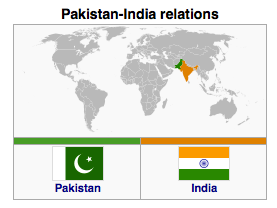Indian Power For Pakistan: A Step In The Right Direction – Analysis
By IPCS
By Alok Bansal
The recent decision of the Government of India to offer 5000 MW of electricity to Pakistan to meet its urgent requirements on the side lines of the Second Nuclear Security Summit in Seoul is a step in the right direction. It will go a long way in bringing the two embittered neighbours together, while ameliorating the hardships faced by Pakistani citizens due to long hours of load shedding as the temperatures are rising in Punjab. India let go a wonderful opportunity to build goodwill amongst the Pakistani masses when it refused to lease locomotives to haul the Pakistani Railways (PR) out of the woods. Even if the Indian Railways had no spare locomotives, it made tremendous sense to offer some to Pakistan at a time when the PR had come to a grinding halt on account of serious malfunctioning of Chinese locomotives. After all, the two railway systems were part of a common network and strong complementarities exist between the two.

Since 24 March 2012, when the gap between the demand and the supply of electricity in Pakistan exceeded 50 per cent, there have been riots across Pakistan, especially in Punjab, the most populous province of Pakistan. Throughout opposition-ruled Punjab, citizens fed up with long hours of power cuts (which extend up to 16 hours in urban areas and up to 20 hours in rural areas) have been burning tyres on the roads and blocking traffic in protest for the past one week. On 24 March the demand shot up to 14000 MW as against a power supply of 8000 MW. The tripping of two thermal power plants and low production by various Independent Power Producers (IPP), accentuated the problem. Lahore city was without power for five hours at a stretch and traders joined demonstrators leading to a closure of most of the markets. Most of the industrial units came to a standstill rendering thousands of daily wage workers jobless. Absence of power led to acute water shortages as pumps could not be operated. Power cuts coupled with a shortage of piped gas have forced many households in urban Punjab to resort to firewood to keep the kitchen fires burning.
Although generation capacity in Pakistan has risen since 2007, the actual power generated has come down, primarily on account of circular debt. Most IPPs generate electricity using Furnace Fuel Oil (FFO) and supply it to Pakistan Electric Power Company (PEPCO), which distributes power to other downstream users. Over the years PEPCO has not been able to pay the IPPs for the power supplied, because, firstly, it has not been able to receive its dues from consumers and secondly, the tariffs were not sufficient to make good the cost of power purchased. As a result, IPPs have not been able to pay oil marketing companies for the oil consumed; consequently, oil companies which have liquidity crunch of their own, with inadequate cash reserves to import oil, have curtailed supplies to them. As on 15 March, the circular debt had risen to INR 396.7 billion. This has resulted in most IPPs operating at almost a quarter of their capacities; this coupled with rising demands has created an acute power shortage. To aggravate matters, both Tarbela and Mangla, the two major reservoirs of water in Pakistan, have virtually reached dead levels and hydro power generation has diminished considerably. There is a need to fill up the reservoirs as water will be required for Rabi crops; as a result the discharge from the dams and consequently the power generated is of a bare minimum.
The severe power shortage is not only crippling industry in Pakistan, but is also affecting normal life. This provides India a good opportunity to provide succour. Indian electricity can easily be transmitted across the border in Punjab, without much additional infrastructure and consequent delays. The advantages will be clearly visible on the ground and will lead to enormous goodwill for India amongst the masses and will deflate the campaign being launched by Difa-e-Pakistan against trade with India.
The goodwill generated should be used to push in closer trade relations. The common man should be able to derive benefit from the increased trade. Power supply can be followed by supply of railway locomotives and other such items, which will make a visible impact on the masses of Pakistan, so that the massive campaign being launched against trade with India can be defeated. As the movement of petroleum products, food stuff and pharmaceutical products start, the masses in Pakistan will reap the benefits of cheaper fuel, food and medicines, thereby turning them into proponents of a liberal trade regime.
India on its part must do all it takes to allay the apprehensions Pakistan that its non-tariff barriers restrict Pakistani exports to India. Better trade relations between India and Pakistan would not only usher in peace and prosperity, but could usher in South Asian economic union in times to come.
Alok Bansal
Security Analyst
email: [email protected]
